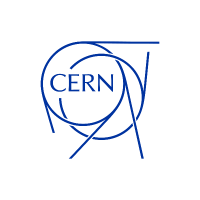
Mechanical Engineering Fellow at CERN
From student placement to designing the “eyes and ears” of CERN’s accelerators — this engineer’s journey comes full circle. See how a student project became part of CERN’s next big upgrade.

Mechanical Engineering Fellow
Landing My First CERN Role
My BEng at Bath included a year-long placement. I applied for a Technical Studentship at CERN and managed to get it! I arrived in July 2014, just after finishing the second year of my degree. I then returned to University in September 2015.
CERN Is Not Just for Physicists
I had always been fascinated about the research carried out at CERN but thought that it was an organisation mainly for physicists.
When I found out that Bath students a year ahead of me were doing their placements at CERN, and not in physics but in none other than mechanical engineering, I thought that there was no better place but CERN to gain experience as a student.
Additionally, the plurinational and multidisciplinary environment would add to the technical experience and enrich my placement year in more than one way.
Back to the Lab
After finishing my MSc at Imperial College, I returned to CERN, specifically to the Mechanics and Logistics Section that I had been a student in a few years before.
I first had a VIA contract, which is different from a Fellowship but similar in that it is a contract for recent graduates with 0 to 4 years of experience.
I then applied for a Fellowship contract and started as a Fellow in Beam Instrumentation in October 2019. As Ray said, we design beam diagnostics, the "eyes and ears" of particle accelerators.
As a mechanical engineer, I work on the whole life cycle of instruments, from feasibility studies or making prototypes, to carrying out structural and thermal simulations, developing CAD models and manufacturing drawings, or assembling and installing the final instrument in the accelerator.
A Student Project Comes Full Circle
As a Technical Student, I tried to make the most of every opportunity, task or project I was given, and spent most of my year as a student developing a special, rectangular Ultra-High Vacuum flange. I managed to see the final product and test it before I left but the instrument on which it was going to be used was not ready back then.
Fast forward a few years, I am now back as a Fellow, and the flange I developed as a student is about to be installed in one of CERN's accelerators! I am now working on instrumentation for the High-Luminosity upgrade of the LHC, and I hope to be able to see our new instrument installed in a year or two!
The Next Chapter
I have recently been given an extension to my fellowship contract. That will be 8 years since I first joined as a student and 5 years since I returned to CERN after graduating.
Staying at CERN is definitely on my mind, but competition is high so time will tell!
Ana first joined CERN as a Technical Student while completing a BEng at the University of Bath. After earning an MSc from Imperial College London, they returned to work in the Mechanics and Logistics.








